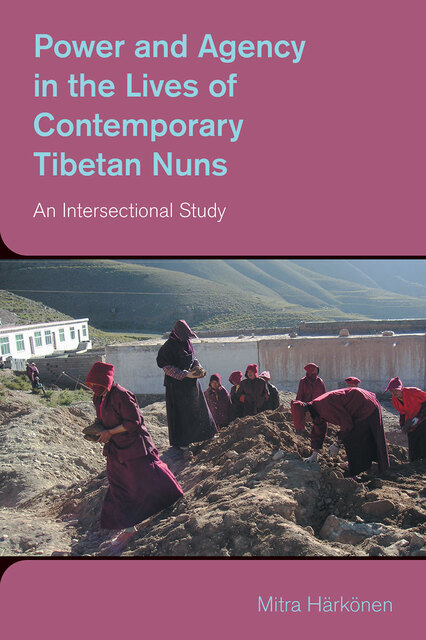LIBRARY COLLECTIONS
Complete Collection
South & East Asia
Authorized users can access the eBook using institutional credentials or personal password via the Read Online tab.
An Intersectional Study
This study examines the lived experiences of oppression and opportunities encountered by Tibetan Buddhist nuns. The theoretical approach of the research is intersectionality, which aims at describing and analyzing the interconnection of different oppressive status positions and institutions and giving voice to marginalized groups. The book investigates how the intersections of the nuns’ female gender, their Buddhist religion and their Tibetan nationality on the one hand produce subordination and an unequal distribution of power and, on the other hand, provide the nuns with opportunities and agency.
The book is based on research material collected during three field research trips to the traditionally Tibetan regions of Amdo and Kham in the People’s Republic of China, and one trip to a Tibetan exile community in Himachal Pradesh in India. The primary material comprises the life story interviews of 38 nuns. In addition, 49 focused and semi-structured interviews with lay Tibetans and some monks and nuns were conducted and thematically analyzed in order to gain more information about the significance of Tibetan monasticism in the present-day Tibetan society.
The analysis shows that power structures and relations that disadvantage nuns as women, as religious practitioners, and as Tibetans are constructed and maintained in different domains of power. In the structural domain, traditional but still dominant institutions – such as the distribution of work, marriage and educational practices, as well as religious institutions – disadvantage Tibetan nuns. In the disciplinary domain of power, the nuns find themselves monitored by traditional culture and the Chinese authorities. The unequal distribution of power in these domains is justified by hegemonic ideas based on religious and cultural beliefs, ideas of religion and modernity, and religion and gender. These domains of power find their expression in the everyday life of people in the interpersonal sphere.
Moreover, the analysis also reveals that many of the nuns were highly active in choosing and determining their life course. It can be suggested that monastic life offers Tibetan women freedom from the suffering faced by laywomen. The juncture of their gender, religion and nationality also provides them with agency that can be understood as resistance. This becomes most evident in their nationalism, which is both visible and more subtle. Finally, monastic life offers them religious agency as compassionate bodhisattvas, who aim to not only benefit other living beings but also themselves. The research shows that depending on the intersection of her status positions, the Tibetan nun can be either disadvantaged or privileged, or in some cases, both at the same time.

ISBN (Hardback) 9781800503007
Price (Hardback) £75.00 / $100.00
ISBN- (Paperback) 9781800503014
Price (Paperback) £26.95 / $32.00
ISBN (eBook) 9781800503021
ISBN (ePub) 9781800507401
Price (eBook & ePub) Individual £26.95 / $32.00
Institutional £75.00 / $100.00
Publication 16/01/2023
Pages 252
Size 234 x 156mm
Readership scholars
Only users granted permission may view this project's texts, resources, and other content.

We use cookies to analyze our traffic. Please decide if you are willing to accept cookies from our website. You can change this setting anytime in Privacy Settings.